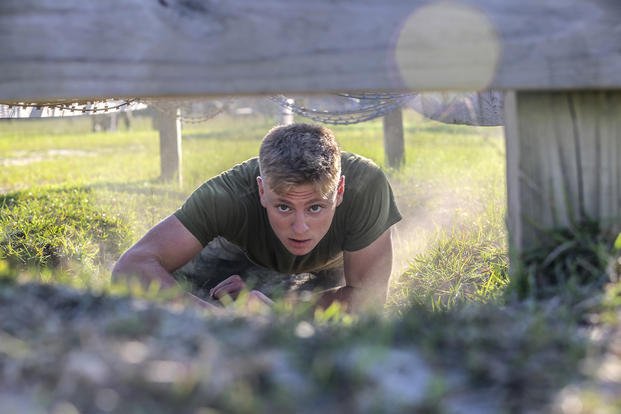When it comes to developing training programs for those considering the tactical professions, there is a process to consider.
First, you must realize that there are three phases of tactical fitness:
1. Preparing to get to the training: More focus on entry-level PT tests and focus on weaknesses.
2. Preparing to get through the training: Focus on elements of boot camp, basic training and any follow-on, special ops-level training. Really focus on weaknesses here and maintain strengths.
3. Active-duty training: Big focus on stress mitigation, recovery, longevity and all the elements of fitness needed to do the job.
And there's a potential fourth phase, if you want to consider retirement and post-career fitness and well-being.
You will move through these phases as you progress throughout your training and advance through the ranks and perhaps change jobs or military occupational specialties. Understand that the phases of tactical fitness are real, and you should be aware of the differences in training for each of them.
Related content:
Training certain movements: crawls, carries and conditioning
You may have noticed the trend toward tactical fitness tests. They are pulled from the necessary movements and events that occur in the field when military personnel are doing their physically demanding jobs. There are events in boot camp and selection programs (new tests, as well) in which you crawl under and over obstacles; carry gear in backpacks or by hand (grip); move quickly with agility (changing directions); and run, ruck and even swim, depending on your job in the military.
These crawls, carries and conditioning are in multiple directions and methods. Being able to move your body, plus the weight of your gear, through varied distances and directions is the new normal for training and requirements for your job.
PT tests. To get into these programs and stay in them, you have to train to be good at fitness tests. That does not mean you need to focus only on the test events, but as the test date nears, you should make sure you have a cycle of PT test training, depending upon your branch of service and test.
Here are some ideas:
Crawls: There may be times on deployment when you'll be crawling low on the ground, under obstacles, in buildings with fire, under cover from incoming rounds, and dragging people and gear. Staying low can keep you alive. Learning how to crawl and treating it like an event in workouts is wise to help you build the strength required and the conditioning needed if crawling for hundreds of meters is required. Mixing in crawls (low crawls, high crawls, bear crawls) with PT pyramids as above is a good way to build up your crawling ability.
Carries: You always will carry something -- weapons, ammo, water and other gear in backpacks. But you also may carry ammo cans, gear, tools and even people with your hands or draped over your shoulder. The strength required to do this is built in the weight room. Adding a lift cycle to build strength is required for your job. See periodization on how to mix it in the year programming.
Conditioning: You will be running, rucking and perhaps swimming, depending on your branch of service. This requires both strength, cardio endurance and muscle stamina to maintain your ability. This type of cardio conditioning needs to be done at least every other day while you also are able to focus on strength-endurance training in the weight room.
As we age in this profession, you may want to create a program that allows for impact conditioning (run, ruck, speed or agility, lift) every other day with non-impact cardio conditioning options (swim, row, bike, elliptical) on the days in between. Your joints will thank you for it, and your heart and lungs can maintain their efficient capabilities.
Tactical fitness requires you to be good at strength and power, speed and agility, muscle stamina and endurance, flexibility and mobility, and grip. Putting all that together in an optimal way requires a smart mix of periodization spread throughout the year so you can focus on each of these elements. Getting good at all of them is not the same as being great in one or two elements of fitness and having a weakness develop because you ignored an area.
Yes, that means doing training that you may not like in order to reduce a weakness and maybe even turn it into a strength. Regardless, training to become a tactical athlete takes time. Give yourself a year to go through all the elements of fitness in focused cycles, and you will be amazed at the results and how you feel by making changes to your training a few times a year.
For more answers to your tactical fitness programming, check out these related articles:
Twenty years of tactical fitness periodization
Stew Smith is a former Navy SEAL and fitness author certified as a Strength and Conditioning Specialist (CSCS) with the National Strength and Conditioning Association. Visit his Fitness eBook store if you’re looking to start a workout program to create a healthy lifestyle. Send your fitness questions to stew@stewsmith.com.
Want to Learn More About Military Life?
Whether you're thinking of joining the military, looking for fitness and basic training tips, or keeping up with military life and benefits, Military.com has you covered. Subscribe to Military.com to have military news, updates and resources delivered directly to your inbox.
















